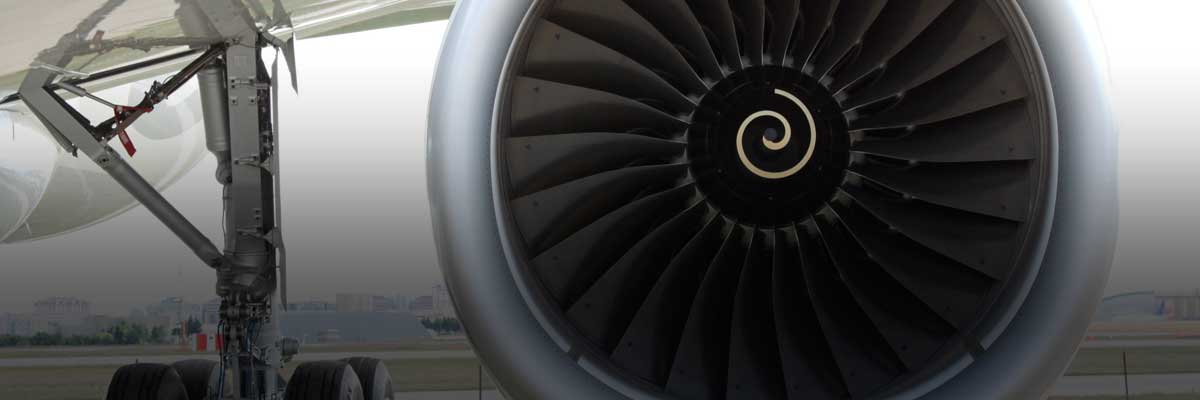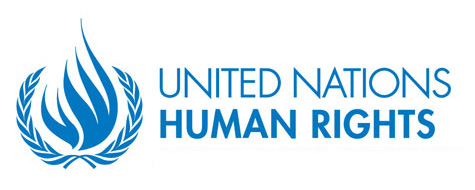Human rights are inherent to all people, regardless of nationality, sex, national or ethnic origin, color, religion, language, or any other status. They are globally agreed upon standards of achievement for all people, covering a wide range of independent yet interconnected civil, political, economic, social, cultural, and environmental rights that serve as a ‘code of conduct’ for all human beings.
All companies can impact human rights either positively or negatively through their action or inactions. The key document speaking to these impacts is the UN Guiding Principles on Business and Human Rights (UNGPs), the authoritative global standard on business and human rights. Though technically ‘soft law’, the UNGPs have been incorporated into the OECD Guidelines for Multinational Enterprises, ISO 26000, IFC Performance Standards, GRI, UN Sustainable Development Goals, and many other frameworks. They have also been endorsed by business and industry organizations representing thousands of companies, civil society organizations, NGOs, and member states of the United Nations.
As part of the corporate responsibility to respect human rights, the UNGPs require companies to actively identify and manage the negative human rights impacts to which they may cause or contribute or to which they are linked through their business relationships.
This primer identifies the 10 most relevant, urgent, and probable human rights impacts for businesses operating in the Transport & Logistics (T&L) sector. It is intended as a starting point and should be supplemented by robust internal human rights due diligence processes. The information here is gathered from BSR’s direct engagement with T&L companies and the companies that rely on them, as well as our 30 years of experience helping companies in all sectors manage their human rights risks.
T&L activities provide the backbone to the modern economy and global trade. Almost every company relies on T&L services to deliver its goods or services, and the trend has been toward the outsourcing of these activities to specialized transport actors. This reliance on outsourcing has given rise to challenges to ensure the respect for human rights for workers throughout the extended supply chain.
The T&L sector comprises a wide range of activities, along a value chain that includes various modes of transport of goods (by road, rail, air, and water), the physical transfer points (e.g., terminals, airports, rail stations) and warehouses where goods are stored, packaged, and sorted for ultimate delivery to end-customers, and the intermediaries (e.g. freight forwarders) that connect these different services. These activities rely on workers including truck drivers and last mile delivery workers, pilots, and seafarers, as well as logistics staff such as warehouse workers, ground crews, and dockworkers. They can also impact wider communities, particularly those located near ports, warehouses, or other transportation hubs or routes.
While each of the activities undertaken by T&L companies present unique human rights risks and challenges, this primer highlights the most common and significant risks across the T&L sector as a whole. The primer also offers opportunities for T&L, as a sector that is both global and local and employs tens of millions of workers around the world, to advance the realization of human rights.
Top Human Rights Risks
1: Occupational Health and Safety
The most prevalent risk for workers in the T&L sector is to their physical and mental health and safety at work. This ranges from the risks of physical injury (e.g., machine-related incidents aboard ships or in terminals and road accidents) to long-term health impacts (e.g. from exposure to hazardous substances or physically strenuous work) but also includes mental health impacts and “psychosocial” risks linked to pressured working conditions or the increased technological automation of processes. Workplace violence and harassment, including sexual harassment, is also common in the T&L sector—notably in the maritime industry where women make up an extreme minority of the workforce. Finally, climate change is exacerbating risks linked to working in extreme weather conditions (e.g. heat, rain), including impacts to the working environment (e.g. warped roads and worsened storms).
2: Fair Working Conditions
In every sector, global expansion, technological progress, and consumer expectations have pushed companies to compete on flexibility and responsiveness. While this has enabled economic development in many places, it has also applied downward pressure to reduce wages and benefits, while increasing the expectations placed on workers. The COVID-19 pandemic exposed some of the unfair conditions placed on T&L workers, including excessive working hours for seafarers and inadequate rest times and facilities for road transport workers. Many warehouse workers are employed on precarious contracts for very low wages (that oftentimes fall short of a living wage) and required to work irregular shifts that may be detrimental to their health and family life. Gig workers involved in last-mile deliveries frequently face exploitative contract terms and lack employee benefits.
3: Forced Labor and Human Trafficking
T&L companies rely on large, low-skilled workforces and often use recruitment agencies to find and train employees (e.g. manning agencies in shipping and third-party or temporary labor agencies in warehouse logistics). These agencies, especially in countries with weaker labor laws or enforcement, or more informal economies, are at high risk of employing workers under forced labor conditions. Such workers may be coerced into paying recruitment fees, may work illegally without visas, or may have their passports confiscated and wages withheld. Careful due diligence of labor agencies is critical to minimize these risks. There have also been instances of forced labor in the road transport industry, for example resulting from the pressure to compensate for local driver shortages in Europe through migrant labor. The T&L industry also has frontline exposure to human trafficking activities, which rely on transportation to traffic victims around. While these activities may not be caused by T&L companies’ core operations, the companies may still have an opportunity to contribute to the detection and prevention of trafficking.
4: Freedom of Association and Collective Bargaining
In many countries where T&L companies operate, the freedom of workers to associate and collectively bargain through independent trade unions is not protected, and may even be prohibited by law. These rights are not exclusively exercised through formal trade unions and may be exercised through other forms of worker organization and representation (e.g., work councils, employee associations, state-sponsored unions). However, local laws or socio-political norms (such as anti-union sentiment in Southern United States) may restrict their exercise by workers without proactive encouragement from their employer. This risk is heightened in countries where independent contractors (e.g. truck drivers) or subcontracted labor (e.g. temporary warehouse workers or informal day workers) have limited access to collective representation and other labor protections. For example, in some countries truck drivers do not have employment contracts allowing them to join trade unions, and last-mile delivery drivers operating as “gig workers” are excluded from labor protections reserved for employees.
5: Collective Bargaining
As seen above, competitive pressures affect the workplace in myriad ways. In recent years, this has become especially acute for the issue of collective bargaining. In many countries, independent unions are not only rare, but illegal. This applies still more pressure on employers—and their suppliers—to restrict the ability of workers to voice their concerns and identify workplace violations. Regardless of the extent of their outsourcing or use of contractors, T&L companies should ensure that workers have access to effective means of collective bargaining, whether through a union, works council, or employee association.
Reference: UDHR Article 20, 23
6: Discrimination
The T&L sector has historically been a male-dominated industry, which has at times resulted in unfair hiring practices, pay disparities, workplace harassment, and unfavorable treatment for minority groups in promotion and professional development. For companies operating in global markets, respecting employees’ rights means guaranteeing equal opportunities for every member of their diverse workforces.
Reference: UDHR Article 2, 23
7: Security Forces
The T&L sector relies heavily on private security companies to protect staff and inventory. If local security staff are not vetted, trained, and accountable to their employer’s social values, they represent a severe risk to local communities. T&L companies should ensure that they avoid security abuses by private contractors by actively engaging with them to ensure their practices, training, and equipment are compliant with human rights.
Reference: UDHR Articles 3, 5
8: Land Acquisition and Resettlement
Infrastructure is critical to the T&L sector. Roads, ports, canals, and other transport networks are often built by third parties, however, and may be developed without adequate consultation and compensation for land expropriated from local communities.
Reference: UDHR Articles 8, 12, 17, 25
9: Grievance Mechanisms and Remedy
The UN Guiding Principles not only require companies to identify and manage their human rights risks, but to actively engage with the people who may be affected and ensure that victims have access to effective remedies. For the T&L sector, this means installing grievance mechanisms that allow workers and communities to point out how the company is impacting them. For some companies, this may be a hotline for employees. For others, it will be a town hall meeting for communities near an infrastructure project. Regardless of the form they take, effective grievance channels are essential for preventing human rights violations and providing remedy to affected parties if they are harmed.
Reference: UDHR Article 8
10: Bribery and Corruption
The T&L sector engages with government extensively, from single vans passing through customs checkpoints to fleets of ships accessing government-owned canals and ports. This makes the sector a high risk for both grand corruption and petty bribery. These acts are inherently human rights violations, as they skew government attention and resources away from the needs of the people they are entrusted to serve. Almost every link in the logistics chain, from where a road is built to how a procurement contract is awarded, contains risks of corruption.
Reference: UDHR Articles 1-28
Top 3 Opportunities for Positive Impact
1: Enable Trade
Transport and logistics enables trade in essential goods and services that contribute to people’s enjoyment of their human rights around the world. More locally, transport infrastructure connects people to jobs, education, and health services. As the COVID-19 pandemic demonstrated, the sector plays an important role in enabling access to health by supporting the efficient movement of vaccinations, medications, and technical equipment. At a time of growing geopolitical tensions, T&L companies should work collectively to coordinate access and ensure essential goods can be transported with minimal disruptions.
2: Combat Human Trafficking
Given their proximity to the issue of human trafficking, T&L companies can play a vital role in raising awareness about it and work with their suppliers and government partners to identify high-risk areas and telltale signs. Proper labor programs, including a code of conduct, fair labor policies, training, due diligence, and supplier management, are essential to improve practices in the supply chain with an eye towards combatting human trafficking.
3: Improve Road Safety
In nearly every country, traffic accidents are among the top 10 causes of death. This is now recognized by several international agencies as a development issue, as the poorest and most remote populations are often at the greatest risk. T&L companies can promote road safety through awareness campaigns for the public and their suppliers, and in doing so, achieve positive impacts on employees’ and communities’ right to life, health, and safety. Companies can also collectively engage governments on these issues to increase standards and to advocate for the allocation of resources sufficient to maintain roads in a safe condition.
Get the Primer
DownloadLet’s talk about how BSR can help you to transform your business and achieve your sustainability goals.




